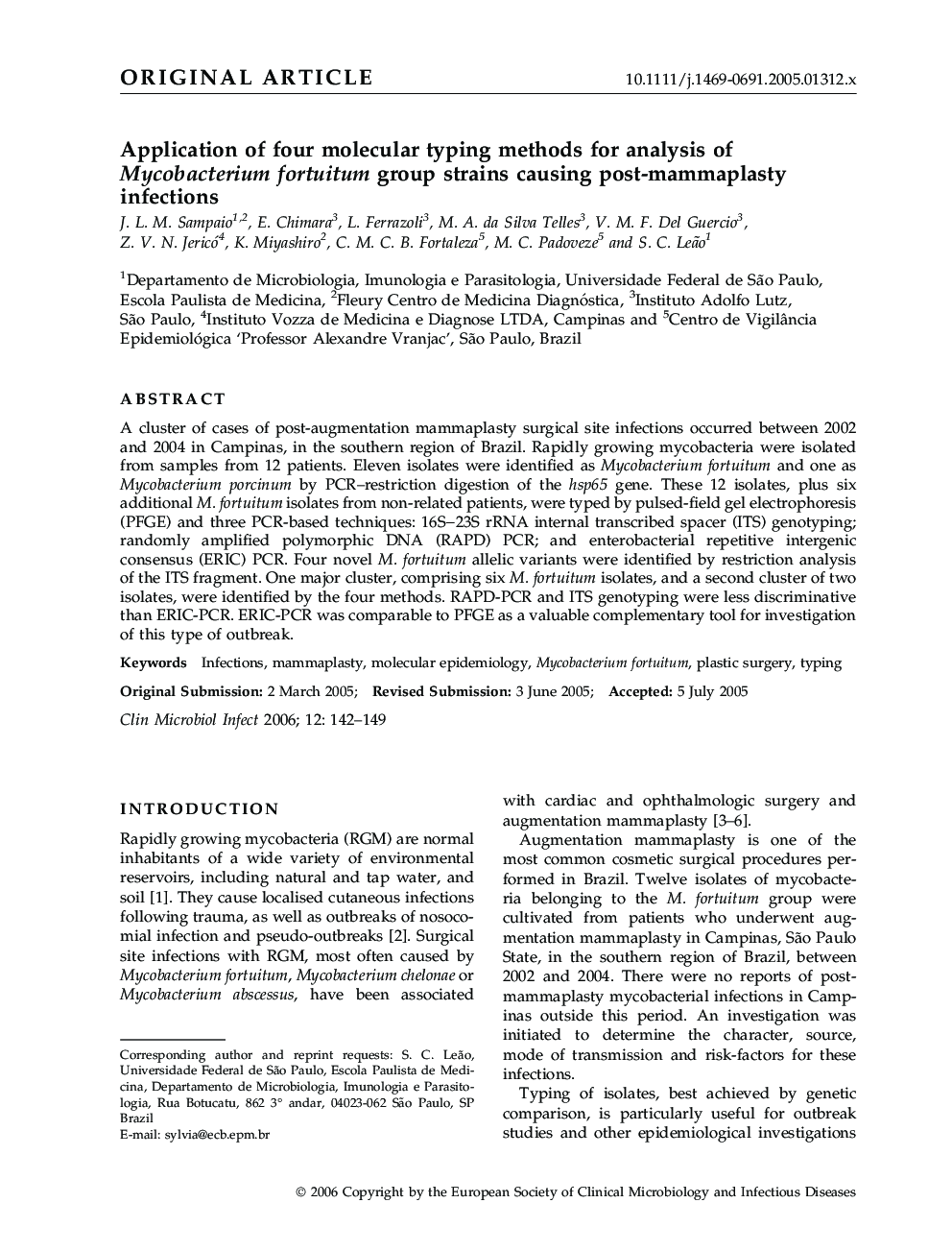| Article ID | Journal | Published Year | Pages | File Type |
|---|---|---|---|---|
| 3398900 | Clinical Microbiology and Infection | 2006 | 8 Pages |
ABSTRACTA cluster of cases of post-augmentation mammaplasty surgical site infections occurred between 2002 and 2004 in Campinas, in the southern region of Brazil. Rapidly growing mycobacteria were isolated from samples from 12 patients. Eleven isolates were identified as Mycobacterium fortuitum and one as Mycobacterium porcinum by PCR–restriction digestion of the hsp65 gene. These 12 isolates, plus six additional M. fortuitum isolates from non-related patients, were typed by pulsed-field gel electrophoresis (PFGE) and three PCR-based techniques: 16S–23S rRNA internal transcribed spacer (ITS) genotyping; randomly amplified polymorphic DNA (RAPD) PCR; and enterobacterial repetitive intergenic consensus (ERIC) PCR. Four novel M. fortuitum allelic variants were identified by restriction analysis of the ITS fragment. One major cluster, comprising six M. fortuitum isolates, and a second cluster of two isolates, were identified by the four methods. RAPD-PCR and ITS genotyping were less discriminative than ERIC-PCR. ERIC-PCR was comparable to PFGE as a valuable complementary tool for investigation of this type of outbreak.
